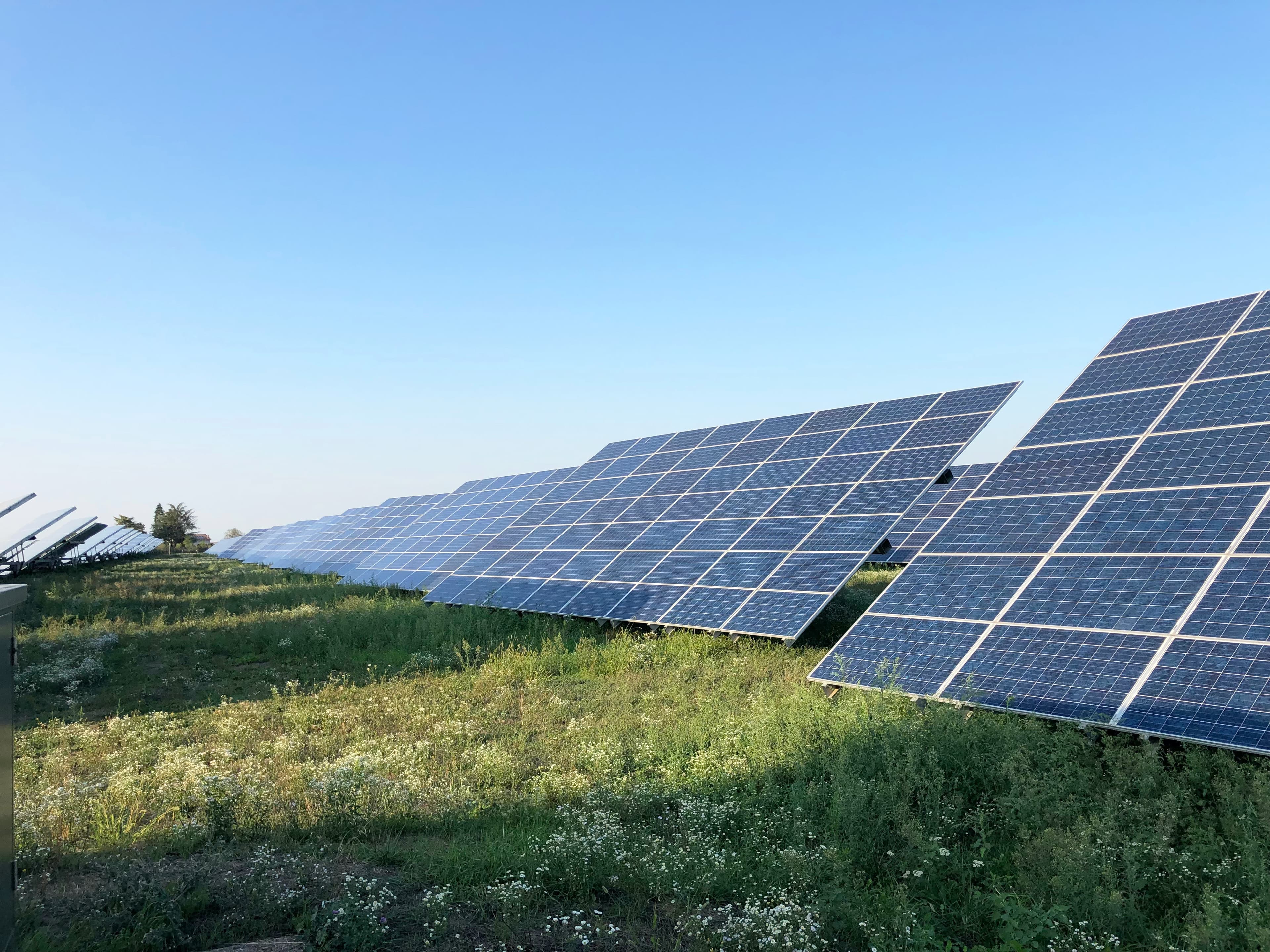
Climate impact and community empowerment.
In pursuit of a better world, the well-being of our environment and local communities are intertwined. That's why our projects are focused on producing a dual impact that benefits both people and the planet.
To us, effective partnership means prioritizing local needs.
This is how our local-centric mindset takes shape.
01
Integrated Site Selection
Cultivate Power develops projects that integrate optimally with the land. Our partners live and farm without interruption while hosting solar farms that mutually benefit their families and the community. Our site selection involves extensive dialogue with farmers and planning authorities to align on needs so that we can build community-integrated solar farms that generate clean, low-cost power.
02
Tailored Community Gains
Every community has distinct attributes, and our benefits are customized to suit their unique needs. Beyond providing accessible, clean energy and increasing local tax revenue, Cultivate Power delves into the priorities and intricacies of each host community. We develop community-benefit strategies that address local needs and cultivate opportunities for prosperity.
03
Fostering Regional Partnerships
To truly deliver tailored community benefits, we nurture local relationships and cultivate connections with regional organizations. Our locally-based teams emphasize cooperative partnerships with the community that address specific needs and create regionally specific benefits. By fostering local connections, we harness real growth built in cooperation with the community itself.
Cultivating better impact
We cultivate purposeful impact by empowering communities and energizing the future.
- Cleaner power. Embracing renewable energy for a more sustainable planet.
- More resilience and reliability. Locally produced and stored power increases energy independence and strengthens the grid.
- Generated locally, consumed locally. Distributed energy resources reduce transportation costs and carbon emissions.
- Lower electric bills for local households. Low-cost solar power provides cheaper energy to residents than traditional power sources.
- Savings for local businesses. Low-cost energy reduces overhead costs.
- Agricultural production boost. We plant pollinators at our solar farms, increasing habitat and surrounding agricultural yields.
- Increased tax revenue. Local governments can significantly grow property tax revenue that goes back into the community.
- More jobs, better workforce. Our projects create jobs with prevailing wages, and we invest in workforce training to enable new workers to enter a growing industry.
- Educational impact beyond solar. We fund scholarship programs at high schools and community colleges in the region.
- Support for local organizations. We team up with local partners to amplify their work within the community.
- Social programs. We help train returning citizens to join the solar workforce.
- Additional income for landowners. Partnering with local farmers to host solar installations can provide them with a new source of revenue while using their land efficiently.
You might be asking yourself
In addition to the economic opportunity solar power offers landowners and their local community, there are also benefits to the local environment, which include:
Improved soil health
Reduced nutrient runoff
Enhanced stormwater management
Soil retention
Reduced pesticide use
Reduced water use
Preservation of future farming opportunities
Source: The American Clean Power Association
Photovoltaic (PV) technologies and solar inverters are not known to pose any significant health dangers to their neighbors. The most important dangers posed are increased highway traffic during the relatively short construction period and dangers posed to trespassers of contact with high voltage equipment. This latter risk is mitigated by signage and the security measures that the industry uses to deter trespassing.
Source: North Carolina State University
Solar farms maintain the permeable nature of the land because they involve limited concrete use only for inverter and transformer pads, preserving the ability of the soil to absorb water.
The land is seeded with native grasses, and the vegetation is actively maintained during the project's life. After deconstruction, it is reseeded.
While the solar farm operates, the agricultural land typically lies fallow, allowing the soil to naturally rejuvenate.
The estimated life of a project is 30+ years. Module suppliers typically warranty the production of panels for 25 years, but the useful life of the panels can be up to 40 years. The inverters typically need to be rebuilt every 12 to 15 years, but the rest of the equipment (posts, racking, wiring) can last for 35+ years. The private lease is for 20 years with additional optional extensions so the project can remain operational for at least 20 years. The special use permit and all financing documentation will match the lease term, so the project can only remain operational for as long as the lease allows. An independent engineer will review the equipment and design to confirm the useful life before financing.
The decommissioning process for solar farms typically involves the removal of all solar panels, racking systems, equipment, and materials from the site. This includes any structures and foundations that were built for the solar farm. The soil and vegetation are then restored to their original condition.
Solar panels consist mainly of glass, aluminum, plastic, copper, and silicon semiconductor materials, all of which are recyclable. They also contain trace amounts of tin-based solder, silver, and other common electrical materials found in most electronics. They are non-hazardous.
The different stages of construction include:
Civil works: This stage involves preparing the land, including grading the site, installing drainage systems, and trenching for medium voltage (MV) cables.
Mechanical installation: This stage involves assembling the trackers, installing the solar panels, installing the cables, installing the electrical components, and installing the Power Conversion Unit.
Electrical works: This stage involves connecting the low-voltage DC and AC systems and connecting the medium-voltage AC system to the grid.
Interconnection construction: This stage involves connecting the solar farm to the grid.
Cold and hot testing
Commissioning
Final performance test
We work regionally with landowners, neighbors, towns and community organizations to create local impact. We believe that to deliver climate and community benefits successfully, project development must occur locally, in partnership with each community.